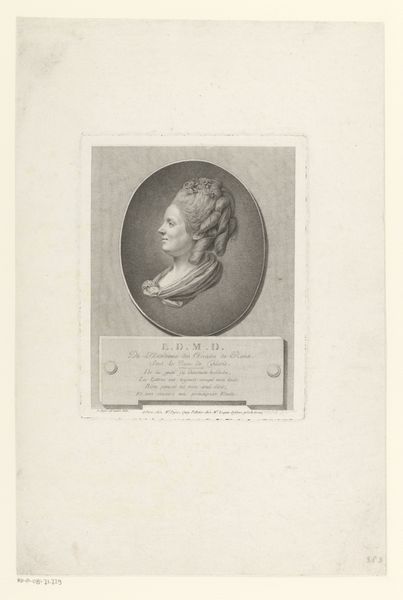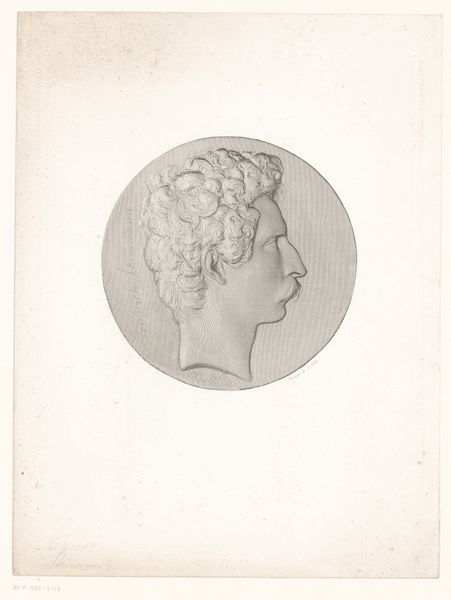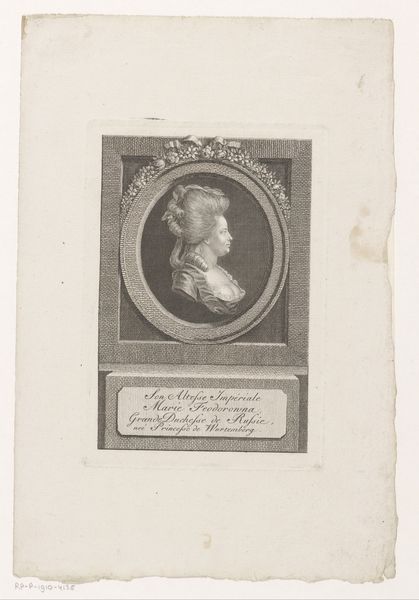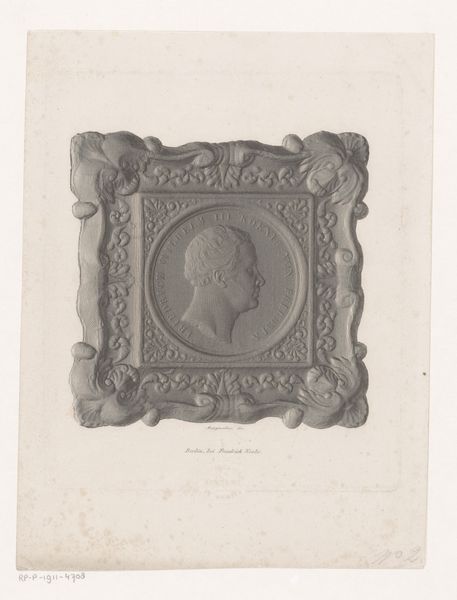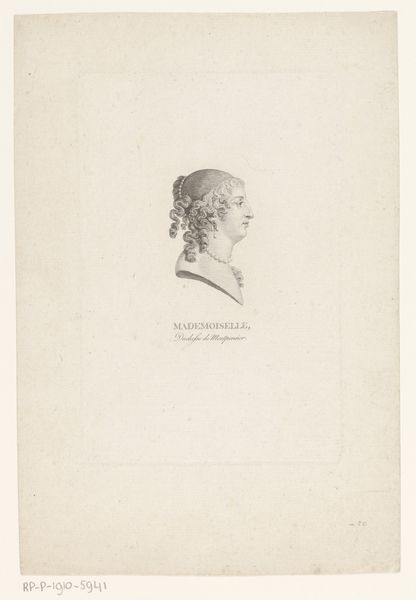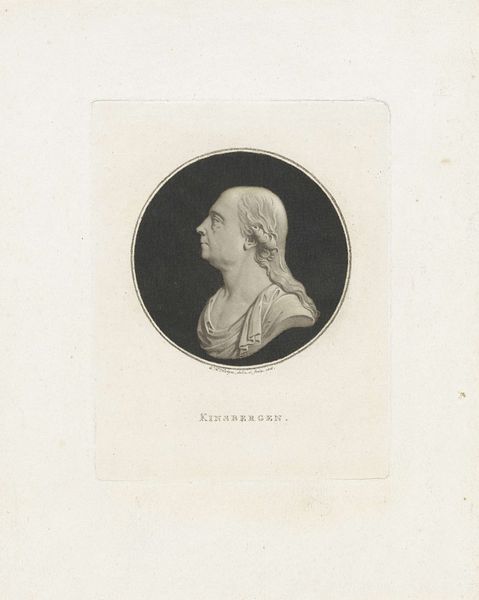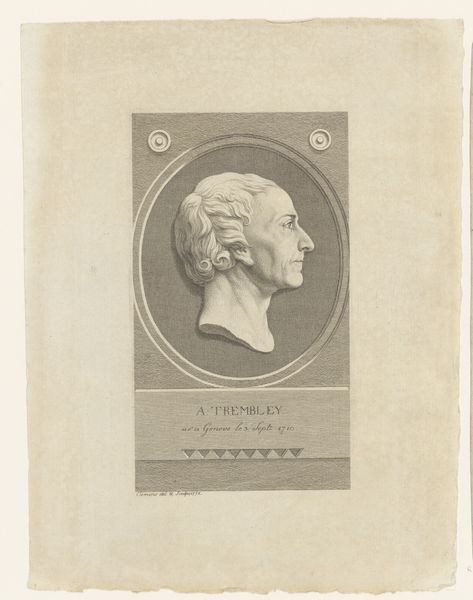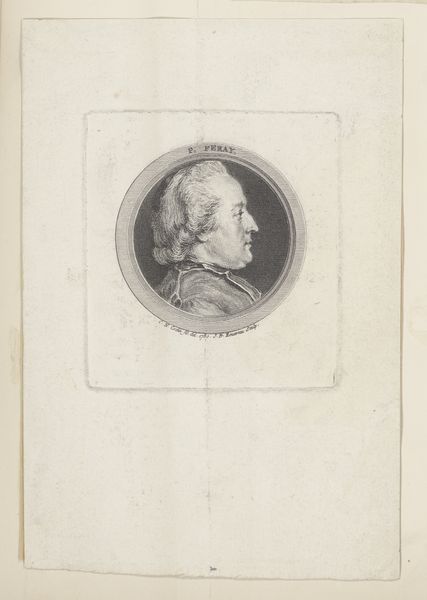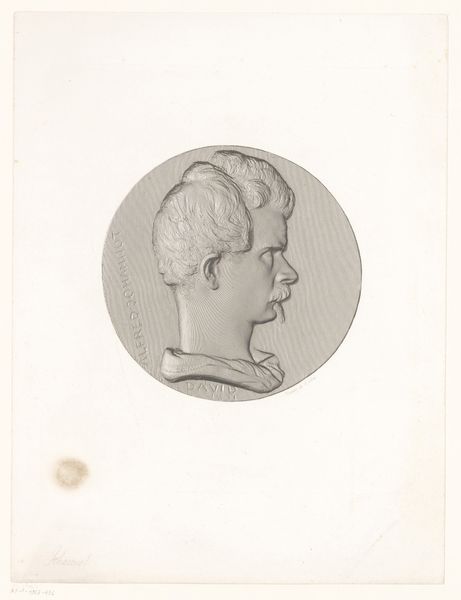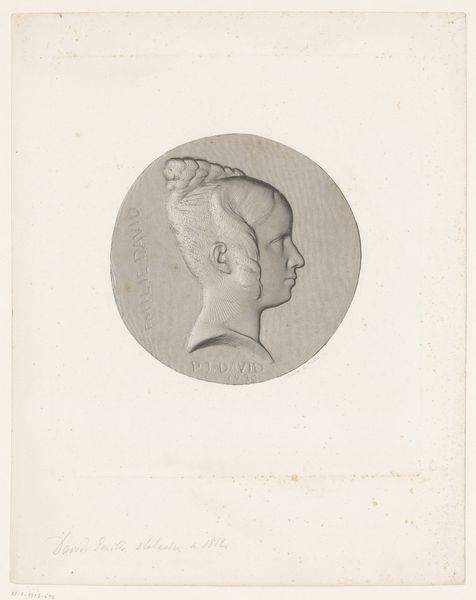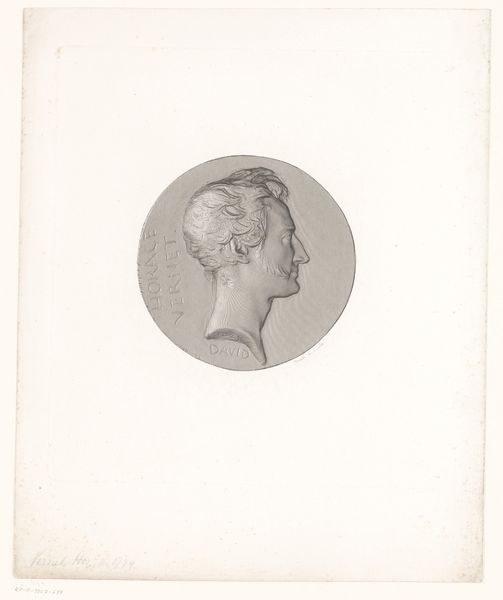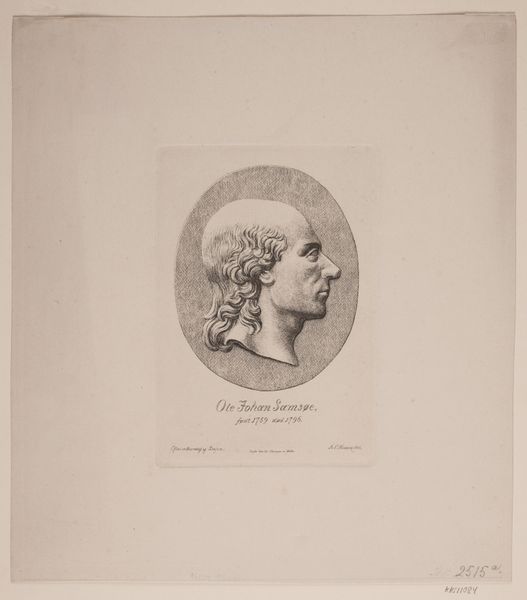
drawing, engraving
#
portrait
#
drawing
#
neoclacissism
#
old engraving style
#
line
#
engraving
#
realism
Dimensions: height 236 mm, width 146 mm
Copyright: Rijks Museum: Open Domain
Editor: So, this is Jacob Ernst Marcus's "Portrait of Alexander I, Tsar of Russia," made in 1814. It’s an engraving, so it's delicate and precise. It feels very formal, almost… staged. What do you see in this piece, beyond just a portrait of a Russian Tsar? Curator: It's interesting you use the word "staged." These portraits, especially of leaders, were carefully constructed to convey power and legitimacy. Consider the neoclassical style; it deliberately evokes the Roman Empire, linking Alexander to that legacy of strength and order. Think about what this meant politically in 1814, with Napoleon's defeat and the redrawing of Europe's map. Who controlled the image, and for what purpose? Editor: That makes sense. The laurel wreath definitely feels Roman. It's not just about aesthetics then; it’s about communicating something specific about Alexander's rule in the wake of major political upheaval? Curator: Exactly. The portrait wasn’t simply capturing a likeness; it was manufacturing a public image. Think about the institutional support behind these images – the patronage systems, the distribution networks. Who was intended to view this portrait, and how would they have interpreted it? Editor: So it is interesting to note the context in which it was created and who its audience was supposed to be. Now that I look closer I see there is a solid gray backdrop within the oval surrounding his image; it makes him feel… boxed in. Curator: The choice of grey backdrop emphasizes that idea. It's a flattening of reality for an audience viewing this, we are being given a one-dimensional version of Tsar Alexander and expected to consume it whole. Now how does that interpretation impact your understanding? Editor: It’s shifted my perspective completely! What initially seemed like a simple, classical portrait now feels much more complex, almost manipulative in its construction of Alexander's image. Curator: Precisely! Art is never created in a vacuum, it always engages in political power play! Editor: I never considered the layers of power dynamics embedded within it. It is like a well-played hand on the stage you mentioned before! Curator: Indeed. Now, consider this viewpoint in your further investigations.
Comments
No comments
Be the first to comment and join the conversation on the ultimate creative platform.
